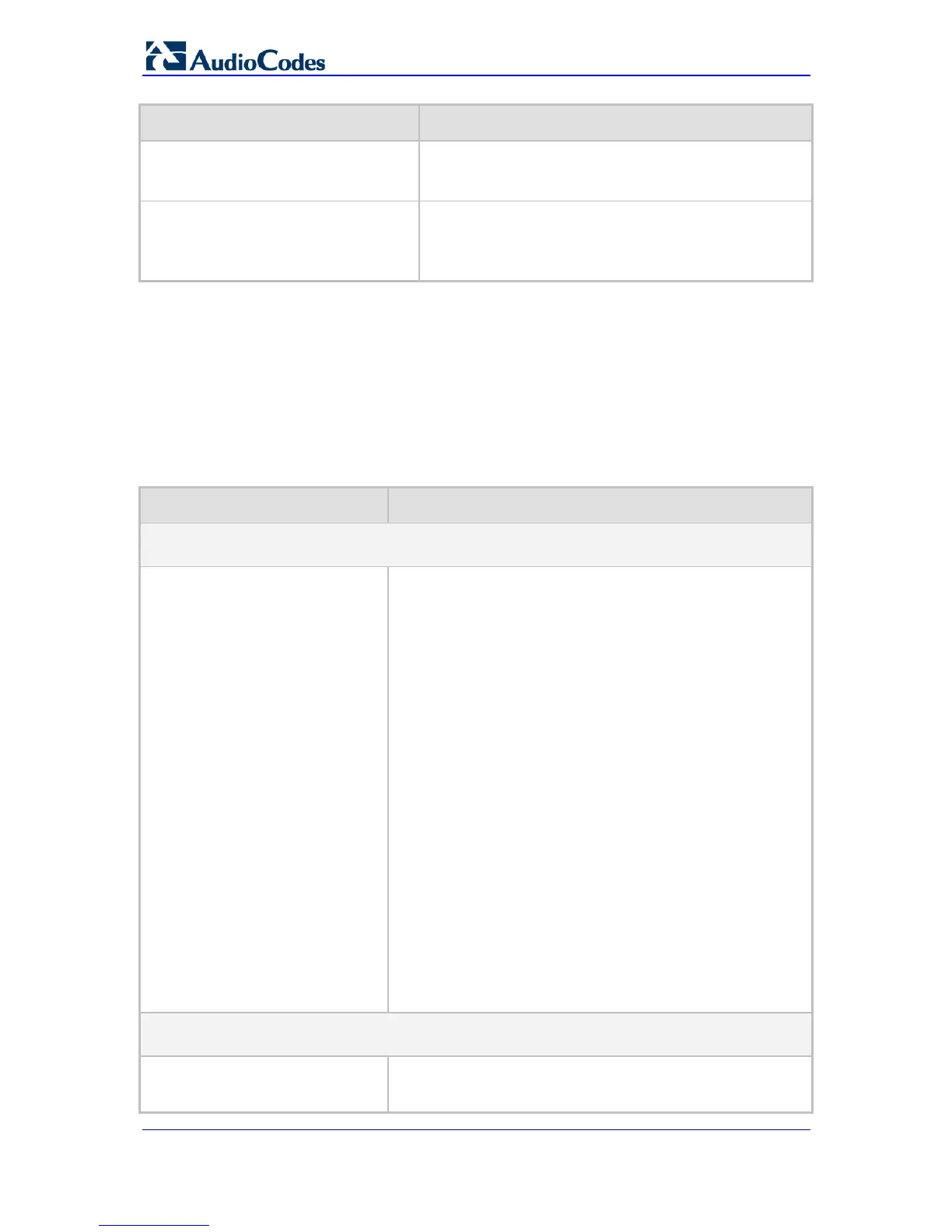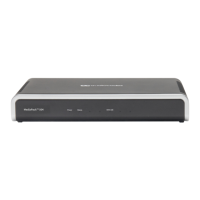SIP User's Manual 434 Document #: LTRT-65415
MediaPack Series
Parameter Description
Web: Disconnect Call Digit Pattern
EMS: Tel Disconnect Code
[TelDisconnectCode]
Determines a digit pattern that when received from the Tel
side, indicates the device to disconnect the call.
The valid range is a 25-character string.
Web: Digit To Ignore Digit Pattern
EMS: Digit To Ignore
[DigitPatternDigitToIgnore]
A digit pattern that if received as Src (S) or Redirect (R)
numbers is ignored and not added to that number.
The valid range is a 25-character string.
10.12.5 Supplementary Services Parameters
This subsection describes the device's supplementary telephony services parameters.
10.12.5.1 Caller ID Parameters
The caller ID parameters are described in the table below.
Table 10-40: Caller ID Parameters
Parameter Description
Web: Caller ID Permissions Table
EMS: SIP Endpoints > Caller ID
[EnableCallerID]
This ini file table parameter configures Caller ID permissions. It
allows you to enable or disable (per port) Caller ID generation
(for FXS interfaces) and detection (for FXO interfaces).
The format of this parameter is as follows:
[EnableCallerID]
FORMAT EnableCallerID_Index = EnableCallerID_IsEnabled;
[\EnableCallerID]
Where,
Index = Port number (where 0 depicts Port 1).
IsEnabled:
9 [0] Disable = disables Caller ID (default).
9 [1] Enable = enables Caller ID generation (FXS) or
detection (FXO).
For example:
EnableCallerID 0 = 1; (caller ID enabled on Port 1)
EnableCallerID 1 = 0; (caller ID disabled on Port 2)
Notes:
If a port is not configured, its Caller ID generation/detection
is determined according to the global parameter
EnableCallerID.
For configuring this table using the Web interface, see
Configuring Caller ID Permissions on page 158.
For an explanation on using ini file table parameters, see
Configuring ini File Table Parameters on page 194.
Web: Caller Display Information Table
EMS: SIP Endpoints > Caller ID
[CallerDisplayInfo]
This ini file table parameter enables the device to send Caller
ID information to IP when a call is made. The called party can
use this information for caller identification. The information

